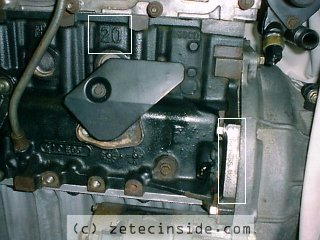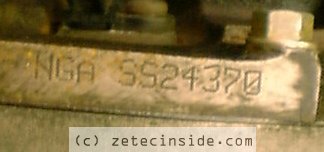Step by step Zetec installation - Page 1
LastHowever, like I've said on this site before, I've been working mostly off my own initiative, with some feedback from Emails.
And at the very forefront of my thoughts, safety has been my number one priority. If it doesn't look right, then its usually unsafe too! And I can't have the car falling to bits around me when I'm pulling 7250 rpm in fifth, travelling at speeds in excess of 100 MPH!!
Here are my 10 steps required to install the Zetec engine in your Fiesta Mk1
1. Obtaining & preparing the engine
2. Change the sump and oil pickup pipe
3. Change the water pump
4. Change the flywheel/clutch
5. Modify the chassis rail
6. Modify engine cradle
7. Relocate engine cradle
8. Create a new engine mount
9. Create an engine steady bar
10.Relocate the brake servo
But which Zetec engine do I need?
There are four different 16V Zetec engines used in the late model Fords (1990->), the Series 1 Zetec, Series 2 Zetec-E and the latest Series 3 Zetec-R, not to mention the Yamaha developed all alloy Zetec-S engine. We're concentrating on the non-Zetec-S variants.So how do I tell them apart?
The Series 1 Zetec has DOHC 16V cast in to the top of the cam cover. This engine is prone to the sticking valve problem, common amongst most series 1 engines. Symptons are a rough idle and difficulty starting when cold. The valve problem is overcome by using the 5W30 grade of engine oil.The Series 2 Zetec-E has 16V Zetec cast in to the top of the cam cover. This is the engine which this project is based upon. There is very little external difference between the Series 1 and 2 engines so the modifications listed should apply to both engines.
The Series 3 Zetec-R has either 16V Zetec or Zetec-R cast in to the top of black acrylic coated and more rounded cam cover. This engine is quite different to the earlier series 1 and 2 engines, and I'd expect compatability problems when following the modifications listed on this site, if you decide to use this engine. Check out the following link to Mark Stewarts web site which gives more detail on the different types of Zetec engine's available. His site can be found at www.mwstewart.co.uk
1800 or 2 litre ?
Only the 2.0 engine features oil cooling jets which spray oil over the base of the pistons and of course the 2.0 will ultimately produce more torque/power when tuned. But using a 2.0 engine pushes up the costs a little as its more expensive to buy 2nd hand usually, and requires a change of sump and oil pickup pipe.Identifying your 2.0 Zetec engine is quite easy, though not obvious when the engine is covered in manifolds and grime. First, the engine number starts with the initials NGA. If you look on the front of the engine, the engine number is etched in to the block next to the gearbox bellhousing. The other identification mark is a large 20 cast in to the block. This is at the top of the front of the block, and is obscured by the exhaust manifold.




